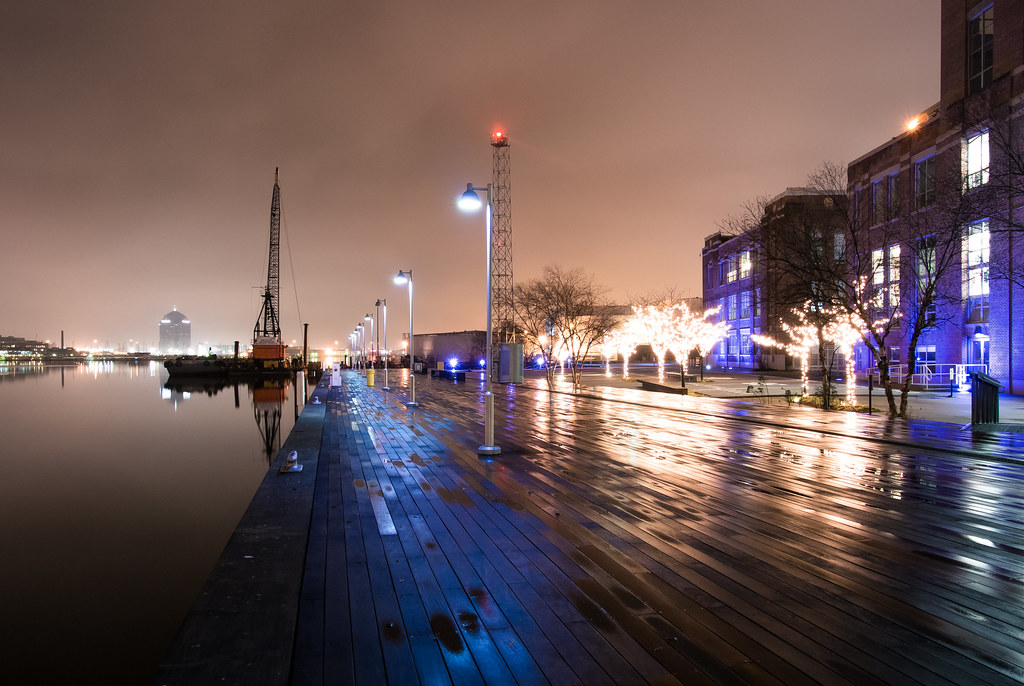 |
| Really hard to beat the infallibility of a 100K+ segment RGB light meter for night shooting. Shot on the Nikon V1 with the 10-30mm f/3.5-5.6 at 10mm, f/8.0 and 20" at ISO 100. |
Specifically, and most recently, I'm thinking back to the Nikon V1, which I purchased on deep discount at Ritz Camera while the company was shuttering all of its storefronts. I remember developing a really difficult-to-navigate love/hate relationship with that camera, always regarding it as a direct competitor, and an inferior one at that, to the Olympus E-P3 that stood as my workhorse at the time. Both cameras were similar in size, my preferred kit for each was an assortment of prime lenses, and ultimately they were twin systems in which the V1 overlapped the E-P3 but with enough shortcomings to negate it in 90% of stuff-I'm-taking-with-me-to-shoot-with-tonight choices. But right now, I find myself fondly thinking back to that camera and rather wishing I still had it to wander the streets at night. For all it got wrong with nearly no buttons/dials/switches, it had solid autofocus at night and Nikon's RGB meters have always handled night exposures better than the rest. That is what my current creative panging cries for right now - a superior night photography experience.
Thus the current subject of my GAS is the Nikon D750, in great departure from my typical minimalist mindset when it comes to equipment. Next to my current workhorse Olympus E-M1, the D750 is a tank, heavy and clunky and lacking all sorts of design finesse despite being but a lowly plastic sensor housing. It goes without saying the imaging capabilities, ability to accurately acquire focus at night, and superior metering would set the tank apart from my E-M1. I've long been yearning for a prime lens kit system, and the Film Maker's package from Nikon comes with 35mm, 50mm, and 85mm f/1.8 lenses, plus spare batteries. But most importantly, and the real differentiator for me between any Olympus and Nikon camera matchup, is the difference in how files are toned. Olympus has always held some notoriety for very punchy and deeply saturated colors in their JPG output, and that ultimately translates to how their RAW files come out as well (not all RAWs are created equal). Nikon, on the other hand, takes more of a flat tone approach, which I honestly think is more of what I'm hunting for right now.
There is a quality to night images photographed on the Nikon V1 in which shadows and highlights would only really clip at my behest with sliders in Lightroom, whereas my Olympus cameras have always tended to clip blacks in night scenes, requiring precarious exposure compensation adjustments which inevitably clip highlights for not too terribly much recovery in the blacks of the frame. Everyone pre-bakes their RAW files just a little bit, and the Sony/Aptina sensors paired with Nikon's rendering engine provides such a beautiful base canvas to work on when in pursuit of a truly high-fidelity image. Olympus' approach, on the other hand, I always tended to prefer because it coaxes the direction of image processing with variations in the arguably punchier direction of its rendering of color and contrast. All of this is to say that an Olympus camera will always be superior for everyday shooting because it can help guide an aloof muse, whereas a Nikon camera's place, to me, seems much more in tune with those with a preconceived vision of what is to be photographed, providing a base palette that is malleable to go in the direction of the photographer's choosing. Right now, I want that flat base palette.
The rational side of me of course says "You don't need to buy a damn thing, just get off your ass and go photograph what you see". And I really can't argue with that logic, because as cliche as the saying is it really is the camera with you that is the best camera. In the meantime, however, I'm going to quietly crave my old Nikon roots.


No comments:
Post a Comment